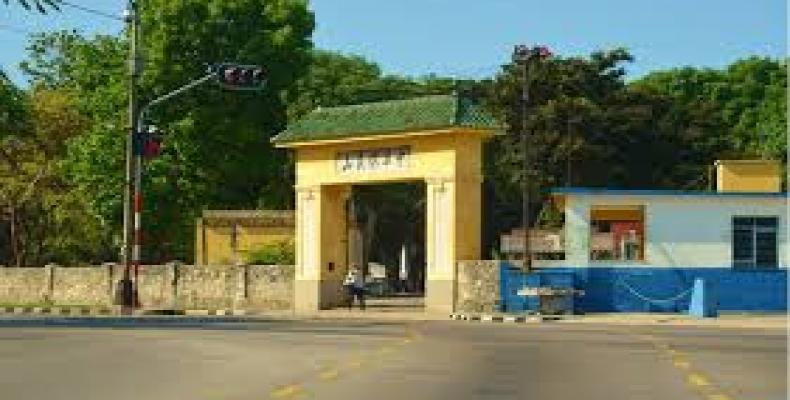Upon arriving at the cemetery once is faced by a large Chinese style entrance. Visitors generally find that cemetery is locked with admittance granted by a guard who must remove the heavy chains that bind the two gates together. This is not symbolic of the many years of struggle the Chinese endured for the approval and completion of cemetery, but in actuality it is used to intimidate bad spirits from entering.
Stepping though the gates reveals a new world and brings the history of the Chinese population in Havana to life. Although the cemetery is not the largest cemetery in Havana, measuring only about 9,000 square meters, the histories of the Chinese descendents it holds are great.
The layout is relatively simple. The tombstones are arranged in straight rows where two tombstones are back to back with a larger walkway at the foot of the graves. There are mausoleum type buildings throughout the cemetery for members of certain Chinese societies. These structures typically have a stone staircase leading to a platform decorated with flowers and old Chinese proverbs as well as other poetic sayings. Some of these have two lions guarding the entrance. Generally, one lion is a male and the other is a female.
Walking around the cemetery the history of how the Chinese assimilated into the Cuban society is evident in the way the writing on the tombstones moves from all Chinese, to Chinese and Spanish, then to the writings being pre do mi nately in Spanish, with the names possibly being in both languages.
The earlier tombstones are rather small and simple, but the modern day ones tend to be larger and more eye -catching. Also interesting is the presence of a cross on most of the tombstones since most of the Chinese people were not Catholic. Apparently when the Chinese men went to Cuba to earn money they often left their families in China. If they had no they opportunity to return home and married again, often their wives would be Catholic and would later request a cross instilled on her late husband's tomb.
Since the Chinese Cemetery is running out of space the various Chinese societies have built large tombs in which to place their members remains. This is done by placing the remains of the deceased into zinc boxes and then sometimes placing them in catacombs. This practice dates back to 1945 and still occurs today and the site contains about 2,000 zinc boxes.
The initial steps to establish a burial ground for the Chinese began in 1883 while Cuba was still under Spanish rule. It was in this year that a proposal for such a cemetery, by Lin Yangyao, was rejected by the Spanish Crown. Instead the South side of the Colón 'Ce metery was reserved for burying non-Catholics. Finally in 1892 the Spanish authorities approved a proposal for the building of a Chinese cemetery. It was finally completed in 1933, but not officially inaugurated until 1947, 100 years after the first Chinese immigrated to Cuba. Even then it was not until July 13, 1967 that the Chinese Cemetery was nationalized by a National Monument Resolution.


